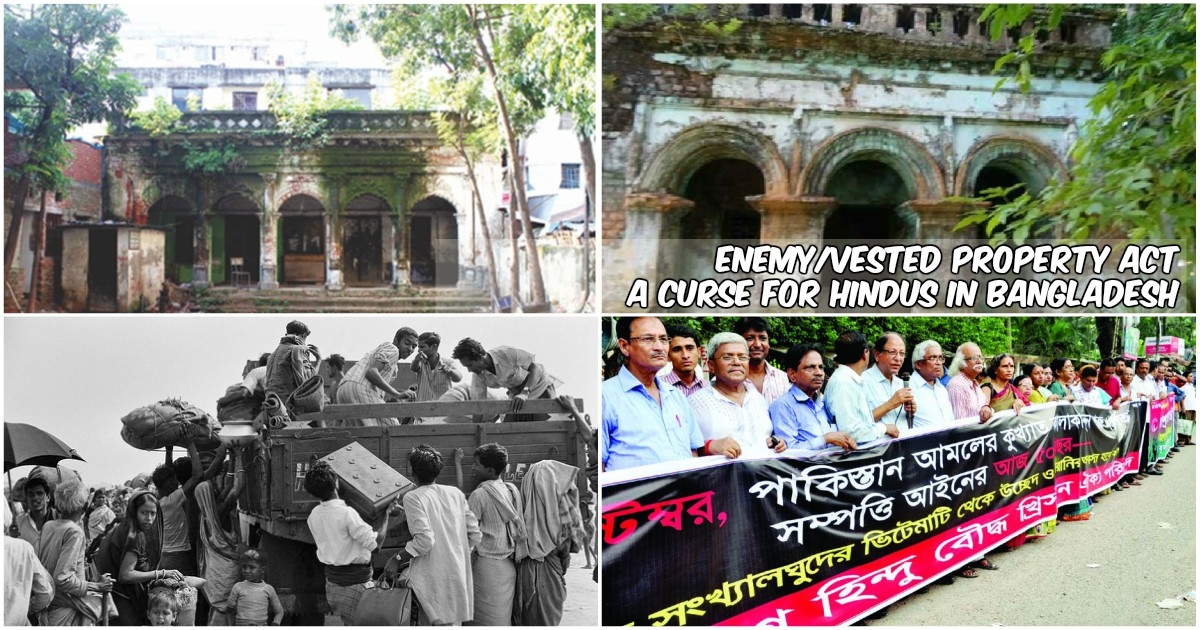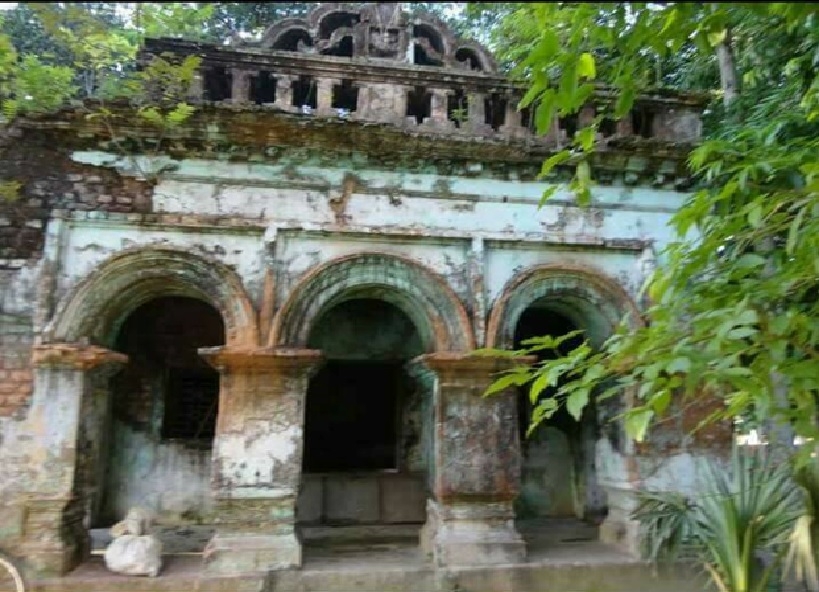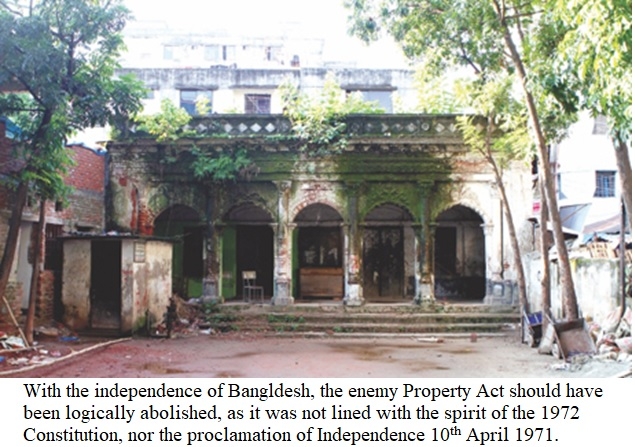Hindus in Bangladesh facing grave deprivation; Thanks to Enemy/Vested Property Act


This massive flow of out-migration created a serious administration problem of managing the leftover properties of evacuees. Using this is an excuse and with the growing hostilities with India, the Pakistan state promulgated some detrimental Acts and Ordinances, which were to leave behind the legacy of communal politics for many years to come.
The Act that helped to destroy the fabric of communal harmony in East Bengal as made under an Executive Order on 9th September 1965 and was called the Enemy Property Custody Registration Order-II of 1965. Enemy because Pakistan engaged the war with India, so India and Hindus were the Enemies of Pakistan. Preceding this Act there were many smaller Acts Promulgated to administer the properties of the evacuees and which paved the way for this ultimate Act.
These were the government of East Bengal Requisition of Property Act (Act XIII of 1948) as a temporary measure of 3 years, which indirectly through the Ordinance No V/80.5.2 has direct or indirect continuity through this present day. Other such Acts were the East Bengal Evacuees Administration of Immovable Property Act 1951; the East Pakistan Disturbed Persons Rehabilitation Ordinance 1964, Ordinance- I of 1964. ALL these Acts created the pretext for the State intervene, supervise, manage and later even transfer the property of evacuees and persons dislocated and affected by communal disturbances.
The consequences of such Ordinances were that it alienated the Hindus in Bangladesh and later right to manage their own property. Such a legal regime also laid the system wide open for manipulation by vested interest groups and the adoption of corruption and malpractice by the administration.
In the Enemy Property Act, India was declared as an Enemy territory and all enlisted properties of the “Enemy” meaning Hindus who had fled to India were to be taken by State control for management and benefits accruing from business relating to such properties would also fall under the control of the State. The war lasted only 17 days. But the way in which these Acts alienated and dispossessed the Hindu community in the years to raise questions about the ulterior motive behind them.

With the independence of Bangladesh, the Enemy Property Act should have been logically abolished, as it was not lined with the spirit of the 1972 Constitution, nor the proclamation of Independence 10th April 1971. But immediately after the liberation, the government of Bangladesh enforced on 26th March 1972, the Bangladesh Vested Property and Assets order, 1972, by virtue of which properties left behind by the Pakistanis while Enemy Properties were considered to be a single category. In 1974, when the government repealed the past 1969 Ordinance, it only meant that all enemy properties of firms which were entrusted to the custodians of enemy property in the then East Pakistan reminded vested in the Government of Bangladesh under the banner of Vested Property.
In 1976, the government of Bangladesh repealed the previous Act only to consolidate it even more. The government was not only to administer and manage the vested properties but also to dispose of or transfer the same on a long-term basis. Such developments indicate that the political and legal regime was getting increasingly hostile to Hindus and the dispossession of land was a game being played out with big stakes and at a high administrative level corroborating strongly with vested interested at the political level.
Things started thawing a bit as external pressure was felt in the aftermath of the backlash against the Hindu Community which occurred as a reaction to the attack on the Babri Mosque in India. This incident of communal hatred against the minority community in Bangladesh brought about the strong international reaction, which was brought to bear on the then government in power. In 1984, President Ershad and Chief Martial Law Administrator issued a series of circulars where it was said that no new property would be enlisted under vested property and that properties already enlisted could not be disposed of anymore. The Circular also saying that management of Hindu Properties would be done according to Hindu laws of ownership and inheritance. Both External, as well as internal pressure groups formed as a response to the 8th amendment which declared Islam to be the state religion, were responsible for such measures. However, these internal circulars were never translated into actual policies as successive regimes, especially in the BNP-Jamat-E-Islam coalition phase further illustrated.
However, the true the monetary cost will be more what the Hindus lost. But, according to the Prof Abul Barkat, the number of loss of assets for an average affected Hindu Household due to EPA/VPA for the whole period between 1965 and 2006 would be 889,517 cores TK.
The Awami League when it came to power in 1996 under the various pressure group internal or external did adopt the Vested Property Restoration Act 2001 in the 22nd Session of the National Parliament on 11th April 2001 repealing the Vested Property Act. This act ensured the return of Vested Properties to their rightful owners and described procedures in which this could be done. The Act though welcomed did not escape criticism by civil society groups, who suggested amendments to make it more foolproof of land dispossession. Inquiry into Causes and Consequences of Deprivation of Hindu Minorities in Bangladesh through the Vested Property Act. Was published in 2000. It demonstrated that 925,050 Hindu households (40% of Hindu families in Bangladesh) have been affected by the Enemy Property Act. This included 748,850 families dispossessed of agricultural land. The total amount of land lost by Hindu households as a result of this discriminatory act was estimated at 1.64 million acres (6,640 km²), which is equivalent to 53 percent of the total land owned by the Hindu community and 5.3 percent of the total land area of Bangladesh.
The survey also showed that the beneficiaries of the land grab through the act cut across all party lines. The political affiliation of direct beneficiaries of the appropriated property was:
- Bangladesh Awami League 44.2%
- Bangladesh Nationalist Party (BNP) 31.7%
- Jatiya Party 5.8%
- Jamaat-e-Islami 4.8%
- Others 13.5%
The greatest appropriation of Hindu property took place immediately after independence during the first Awami League government (1972–75) and during the first period of rule of the Bangladesh Nationalist Party (1976-1980). Barkat's work also showed that since 1948, 75% of the land of religious minorities in East Pakistan and subsequent Bangladesh had been confiscated through provisions of the act.
Barkat also emphasized that less than 0.4% of the population of Bangladesh has benefited from the Enemy Property Act, demonstrating that this law has been abused by those in power through corruption, with no demonstrated sanction by the population at large.
As it stands now, now, new Act is yet to be implemented and experts and civil society groups are consulted for further proposed amendments. But it is the hard reality that there is no any significance example that the Hindu Community has returned back to their property yet.
To be Continued…………
#Acknowledgement: Dinesh Chandra Sarkar, Meghna Guha Thakurata, Prof Abul Barkat
